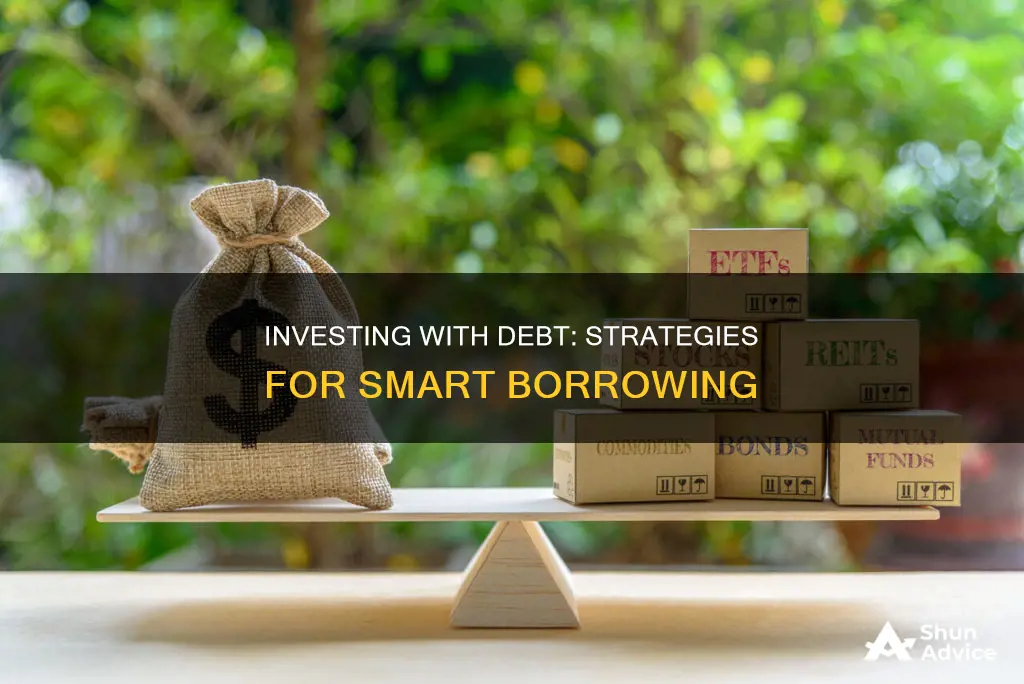
Debt investing is a complex process that involves purchasing a large quantity of debt with the expectation of being paid back with interest. It has traditionally been the domain of large banks, but new opportunities have opened the door for smaller investors. Debt investing can be a way to diversify your portfolio and create a smart strategy for short-term gains. However, it is not recommended as a first step for new investors due to its complexities and potential risks. Understanding what you are investing in, the type of debt, and the potential returns are crucial before diving into debt investing.
There are various ways to invest using debt, such as buying bonds, joining peer loan programs, purchasing tax-lien certificates, or investing in debt mutual funds. Each option has its own set of risks and potential rewards that investors should carefully consider.
While debt investing can be lucrative, it is important to approach it with caution and a thorough understanding of the market.
| Characteristics | Values |
|---|---|
| Definition | Debt investment is an investment made in a firm or project through the purchase of a large quantity of debt, with the expectation of being paid back plus interest. |
| Types | Debt investments can be made in collections of corporate or private debts and include various kinds of debts, such as real estate contracts, owner-financed mortgages, bonds, loans, and debt mutual funds. |
| Benefits | Debt investing can be a great way to diversify your portfolio, achieve short-term goals, and earn lucrative benefits through interest. |
| Risks | Debt investing is a complex process that may carry lower returns compared to equity investments. It is important to understand the type of firm, the source and reason for the debt, and the expected returns before investing. |
| Good Debt vs. Bad Debt | Good debt is money borrowed for something that can increase in value or expand income potential, such as a mortgage or student loan. Bad debt is borrowing for consumption or depreciating assets, like credit card debt or car loans. |
| Leverage | Debt can be used as leverage to multiply investment returns, but it also increases the risk of higher losses. |
What You'll Learn

Student loans
Firstly, it's important to note that student loans are intended to cover educational expenses, and while it's not strictly illegal to use them for other purposes, it is a legal and moral grey area. Government-subsidised loans have restrictions that limit their use to education-related expenses, and investing this type of loan could lead to legal repercussions. Private loans, on the other hand, have fewer restrictions but usually come with higher interest rates.
Secondly, investing student loan money is risky because you need to earn more than the interest rate you're paying on your loans to make a profit. Federal student loan interest rates range from 4.99% to 7.54%, and it can be challenging to find investments that consistently return more than this. Additionally, investing with debt goes against a core rule of investing, which is only to invest money you can afford to lose. If your investments don't perform well, you could lose money and still be left with a large student loan bill to pay.
Finally, the stock market can be unpredictable, and even if you make a good investment, its value can easily turn south, especially if the market crashes.
Overall, the risks of investing student loan money far outweigh the potential benefits. It's generally recommended to only invest money you can afford to lose and to focus on paying off your student loans before investing elsewhere.
Investing Cash Flow: Exploring Other Items
You may want to see also

Home mortgages
When applying for a home mortgage, your debt-to-income ratio is an important factor that lenders consider. This ratio is the percentage of your monthly gross income that goes towards paying off debts such as credit cards, car loans, student loans, and the future monthly mortgage payment. Lenders use this ratio to gauge your ability to pay off a new loan. A lower debt-to-income ratio is generally preferable as it indicates a lower risk of default.
It is worth noting that investment property mortgage rates tend to be higher than those for primary residences. This is because rental properties are considered riskier investments due to the possibility of vacancies and the likelihood that borrowers will prioritize their own home mortgages over rental property mortgages during financial difficulties. As a result, lenders may set a higher bar for investment property mortgages, with stricter credit standards, larger down payment requirements, and a greater emphasis on the debt-to-income ratio.
Overall, while home mortgages can be a beneficial form of debt, careful consideration and financial planning are essential to ensure that you can comfortably manage your debt obligations.
Investing a Large Cash Gift: Strategies for Long-Term Growth
You may want to see also

Borrowing to invest in stocks
Borrowing money to invest in the stock market is a risky strategy that can be ruinous for the average individual investor. However, if you are a sophisticated investor with low debt, high disposable income, and are between the ages of 25 and 50, you may be in a good position to invest with borrowed money.
If you decide to borrow money to invest in stocks, there are several tips you should consider:
- Analyze the numbers: Ensure that the price appreciation of your investment plus dividends outweigh the debt service.
- Cut your teeth first on smaller trades: Learn the fundamentals of investing in your niche before borrowing to invest.
- Don't borrow when close to retirement: The closer you are to retirement, the less risk and debt you should take on.
- Buy cheap: In a long-running bull market, stocks are often highly valued, causing analysts to predict minimal returns over the next decade. Therefore, if you borrow money to invest, look for cheap, undervalued assets.
- Consider buying on margin: You can trade "on margin," which means buying new stocks with the value of stocks you already own. This allows you to purchase more shares than you have cash for, but careful evaluation is required as you can also pay dearly for losses.
- Have an exit strategy: Any investment, leveraged or not, requires a repayment strategy. Ensure you have additional resources and a cushion to support the liability or debt service you used to purchase the investment.
Overall, borrowing to invest in stocks can be a risky strategy, and it is important to carefully consider your financial situation, age, goals, and risk tolerance before deciding to borrow money for this purpose.
Positive Cash Flows: A Smart Investment Strategy?
You may want to see also

Using debt to buy a rentable property
Leverage and Purchasing Power
One of the biggest advantages of using debt to buy a rentable property is the leverage it provides. By using debt, you can control and purchase larger assets with a smaller upfront investment. For example, a down payment of 10% on a property allows you to own an asset worth ten times your equity investment. If the property appreciates in value, your return on equity is multiplied. Real estate investors can build a diverse portfolio of properties much quicker by using debt.
Tax Benefits
Investing in rental properties with debt can provide tax benefits. Debt payments, including mortgage interest, may be tax-deductible, reducing your taxable income. Additionally, depreciation expenses on the property can be claimed, further lowering your tax liability. These tax advantages improve your overall cash flow and enhance the investment returns.
Positive Cash Flow
Rental income from the property can be used to cover the monthly debt payments and expenses, resulting in a positive cash flow. This means the income generated exceeds the money spent on the property each month. A positive cash flow is essential for successful real estate investing, and debt can help you achieve this by minimising the amount of capital required upfront.
Higher Return on Investment
Real estate, over time, tends to appreciate in value, and rental income typically increases as well. By using debt to purchase rental properties, you can benefit from higher overall returns. The appreciation in value and increasing rental income can lead to a higher return on your investment compared to other options.
Hedge Against Inflation
Risk Considerations
While using debt to buy a rentable property offers several benefits, it's important to consider the risks involved. The profitability and cash flow of your investment are subject to market fluctuations, property vacancies, unexpected expenses, and interest rate changes. Conductsection-title> Conduct thorough due diligence and research to minimise these risks. Additionally, ensure that your financial situation, risk tolerance, and expertise are aligned with taking on debt for real estate investing.
In conclusion, using debt to buy a rentable property can be a powerful strategy to enter the real estate market and build wealth. By leveraging debt, you can increase your purchasing power, generate positive cash flow, and potentially achieve higher returns. However, it's crucial to carefully assess the risks and ensure that debt aligns with your financial goals and risk tolerance.
Cash Advance Investment Strategies: A Guide to Getting Started
You may want to see also

Borrowing to fund a business
The simplest option is to take out a business loan from a bank. This provides long-term access to funds at a fixed interest rate, which is often more favourable than other options like business credit cards. However, it can be challenging to get approved for these loans, and banks often require significant personal guarantees or collateral. Government-backed loans, such as those offered by the U.S. Small Business Administration (SBA), can make it easier for small businesses to obtain a loan by guaranteeing it. This reduces the risk for the lender, but it is still important to understand the eligibility requirements and be prepared for a lengthy funding process.
Business credit cards are another option, providing convenient short-term access to funds. However, interest rates can be high, often exceeding 20%, so it is important to make repayments regularly to avoid building up debt. Business lines of credit work similarly to credit cards, providing access to funds up to an agreed-upon amount. They often have more favourable interest rates, especially if the business can offer assets as collateral.
Factoring is a short-term funding solution where a company purchases your accounts receivable, providing immediate cash flow. This can be useful when waiting for payments from customers, but it is not suitable for long-term funding.
When considering borrowing to fund a business, it is important to weigh the advantages and disadvantages. Borrowing allows business owners to retain control and 100% of future profits, as opposed to giving up a share of the company to investors. It can also be a quicker way to access funds compared to wooing potential equity investors. However, there is a difficulty in acquiring loans, with strict requirements and eligibility restrictions. Borrowing also commits the business to repayment plans, which can eat into profits, and often requires personal guarantees or collateral, putting personal assets at risk if the business fails.
To increase the chances of securing a loan, it is advisable to approach multiple lenders, including small local banks and credit unions, and be prepared to negotiate terms. It is essential to carefully consider the costs and risks associated with each option and seek advice from financial professionals to make informed decisions.
Cash Out Investment Seasoning: A Smart Investor's Guide
You may want to see also
Frequently asked questions
Debt investment is when you invest in a firm or project by purchasing a large quantity of debt, with the expectation of being paid back with interest.
Common types of debt investments include real estate contracts, owner-financed mortgages, and bonds.
Debt instruments are things that you are expecting but cannot produce at any given time, such as a bank certificate of deposit or municipal bond. Equities are things that you can own, such as stocks or real estate.
Debt investing is often considered less risky than equity investing, but it also tends to yield lower returns. It's important to carefully research the type of firm you're investing in, where they acquired the debt, why they're selling, and what type of returns you can expect.
Leverage is when you use borrowed money to increase your return on investment. For example, if you invest $50,000 of your own money and borrow an additional $50,000, you can invest a total of $100,000 and potentially earn higher returns. However, this also means that losses could be higher.







